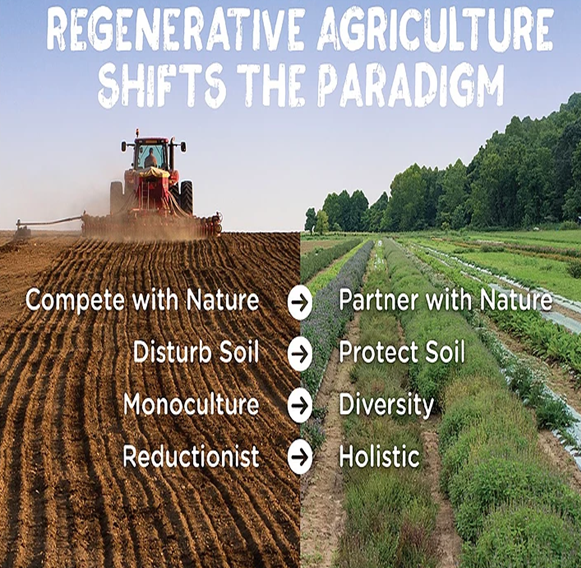Green Harvesting Solution
What is Green Harvesting?
Green Harvesting is accomplished by using mechanical harvesters to mechanically separate the sugarcane leaves and tops from the sugar-bearing stalk — no burning is required. All modern mechanical harvesters used by developed sugarcane growing nations have the ability to green harvest sugarcane, including the mechanical harvesters used in Florida.


Where practiced, sugarcane trash is either left on the soil to be used as mulch, or it is separated and collected to be utilized along with bagasse (the waste product left over after sugarcane refining) to produce electricity, biofuels, biochar, tree free paper products, cattle feed, disintegrant for medicine and more.



Research on green harvesting has shown that this harvesting method can provide numerous agronomic, environmental, and economic benefits including:
• Reduced soil oxidation and increase in soil matter to combat soil erosion
• Increased nutrient cycling leading to increased soil fertility
• Increased carbon sequestration
• Reduced herbicide and chemical fertilizer costs
• Increased soil water retention thus reducing runoff pollution into nearby waterways
• Reduction of air pollution and greenhouse gas (GHG) emissions
• Increased soil microbial life leading to higher overall biodiversity
• Improved public health in surrounding communities
• Increased feedstock for green electricity, biofuels, and other sustainable products
The Florida sugarcane industry can overcome increased transportation and harvesting costs associated with green harvesting and the handling of extra biomass by:
• Eliminating the policy of penalizing farmers for sugarcane trash delivered to sugar mills for processing along with cane billets
• Investing in the installation of detrashing units which not only separate and collect sugarcane trash from cane billets (to be utilized to create electricity, biochar, or for other economic uses) but also provides for increased milling efficiency and profits
• Investing in baling equipment to collect trash not used for mulch
• Allow time for soils to adapt and benefit from increased nutrients absorbed from trash that can reduce herbicide and fertilizer costs and increase fertility over time
• Managing trash in a manner best suited to Florida’s soil and climatic conditions as recommended by green harvesting experts
• Partner with UF IFAS to develop the breeding of sugarcane cultivars best suited to green harvesting in Florida
Green Harvesting Agronomic Research
Remote Sensing and Sustainability Analysis of Sugarcane within the Everglades Agricultural Area
Harvest management effects on sugarcane growth, yield and nutrient cycling in Florida and Costa Rica
Sediment and nutrient loading from sugarcane fields in south Louisiana: Effect of residue management
Quantifying The Loss of Nutrients From the Immediate Area When Sugarcane Residues Are Burnt
Soil aggregation and carbon stabilization in burn and no-burn sugarcane management systems
Green Alternatives to Sugarcane Pre-Harvest Field Burning
Impact of sugarcane trash on fertilizer requirements for São Paulo, Brazil
Global Green Harvesting Trends
Increased awareness of the negative health and environmental impacts caused by pre-harvest sugar field burning has put pressure on governments to enact laws and policies promoting green harvesting. The published agronomic and economic benefits of utilizing sugarcane trash instead of burning has also been driving sugarcane growers to modernize their harvesting practices. Green harvesting of sugarcane is the predominant practice in nations like Brazil, Australia, Cuba, Zimbabwe and in parts of Louisiana within the US. There are efforts underway to end sugarcane burning by governments and impacted communities all over the world where burning is still practiced including the major sugarcane growing nations of Thailand and India.
Green Harvesting in Florida
Sugarcane growers in Florida green harvest when burn permits are denied because of weather conditions and on shallow fields to avoid causing muck fires. USDA Certified organic sugarcane grown by Florida Crystals is green harvested to comply with certification standards. According to information provided at the Sugarland Tour in Clewiston, sugarcane fields adjacent to the Walmart in Clewiston (Hendry County) are green harvested as a courtesy. Our campaign is working to extend that same courtesy to all residents impacted by the toxic, outdated, and unnecessary practice of pre-harvest sugar field burning.
Barney Eiland, a former Florida Crystals Corporation Agricultural Engineer, predicted in 2006 that the future of Florida sugar growing would be green harvesting, with new potential expansion of bio-energy production at Florida mills. This transition was predicted to take place with new technologies, innovations, and strains of sugarcane developed to be best suited for green harvesting (Current Status of Mechanical Harvesting in Florida). Since 2006, technology and innovations from around the world have made green harvesting and the utilization of sugarcane trash more profitable than ever before. If US sugar industry executives continue to live in the past, they will miss out on taking advantage of profitable opportunities as the demand for organic sugarcane, and cleaner forms of renewable biomass energy like sugarcane ethanol, biodiesel, and biochar increases. The public is also demanding the adoption of climate change mitigating regenerative agricultural practices, including no-till crop residue recycling, which is consistent with green sugarcane harvesting.
The converging global sugar industry trends by itself makes a compelling case for the need to adapt to green harvesting alone let alone the need to end the ongoing environmental injustice sugarcane burning imposes on surrounding communities. We are calling on the sugar industry to start investing in green harvesting and to support a just transition that benefits all parties involved. Florida sugarcane growers can right now become champions of truly sustainable agriculture. Big Sugar has the resources to create new green jobs and contribute to a new era of prosperity for the Glades. The Everglades Agricultural Area could be a hotbed for agricultural and biofuel innovation for the rest of the world to follow.

